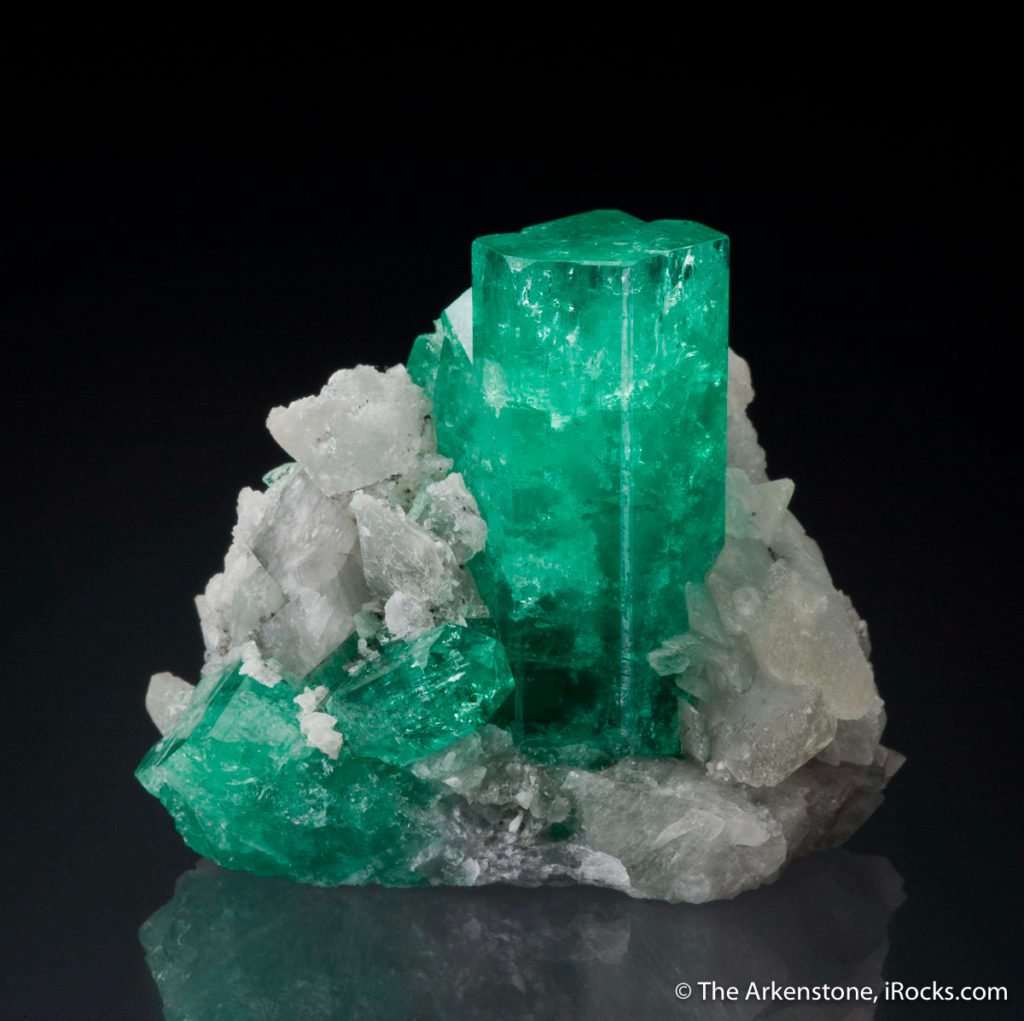Collecting Bold, Beautiful Beryls
Beryls [Be3Al2(SiO3)6] are hexagonal crystals composed of beryllium aluminum cyclosilicate. Beryls are transparent to translucent, with vitreous luster – though their crystals are often pitted and rough, with heavy striation.

A Colombian Emerald – while many people are familiar with the beauty of cut gemstones, they rarely have the chance to see the beauty of these natural art pieces.
In their pure form, beryls appear colorless – though their unique structure and composure enable them to store various trace impurities. These impurities are responsible for the diverse and colorful variety of beryls discovered – in fact, many of the gemstones we think of as separate entities actually exist within the beryl family. Most colors are associated with their own common name, as follows:
Bixbite
The rarest of beryls, deep red bixbite is found in only two locales – both located in Utah. It’s rich sanguine color is attributed to association with manganese (Mn3).
[justified_image_grid ids=”3453, 1644,4189,4188″ justified_image_grid title_field=off link_title_field=off lightbox=magnific img_alt_field=caption]
Heliodor
Colored by association with both iron and uranium, heliodor can vary greatly in color due to the precise combinations of these minerals. From a pale, lemon yellow to brown, and all shades of golden and orange between, heliodor is also sometimes referred to as “golden beryl” – and can even include light green tinting.
[justified_image_grid ids=”4193, 4194,4195,4163″ justified_image_grid title_field=off link_title_field=off lightbox=magnific img_alt_field=caption]
Emerald
A popular gemstone with a deep, intense green coloring formed by exposure to vanadium or chrome. Emeralds are considered a precious and valuable gemstone, whose small inclusions and fissures add interest to its form.
[justified_image_grid ids=”2798, 1666, 3002″ justified_image_grid title_field=off link_title_field=off lightbox=magnific img_alt_field=caption]
Aquamarine
One of the most prevalent types of beryls, this gorgeous gemstone gains its beautiful blue coloring from iron, and can range from light sky blue to a beautiful marine blue – hence its name. It’s uniform coloring and hardness make it ideal for use in jewelry.
[justified_image_grid ids=”1339,2777,2431,3885,2778,144″ justified_image_grid title_field=off link_title_field=off lightbox=magnific img_alt_field=caption]
Morganite
Ranging from light pink to pale violet, this beryl is colored by manganese (Mn2). Formerly known simply as “pink beryl” this gemstone was given its own name to honor finance expert and gem enthusiast J.P. Morgan.
[justified_image_grid ids=”3424,2468,694″ justified_image_grid title_field=off link_title_field=off lightbox=magnific img_alt_field=caption]
Goshenite
This beryl appears as either a white or colorless stone. Named for its original locality in Goshen, in Massachusetts, goshenite holds more historical significance than value as a gemstone, as it was originally used as a material for making the lenses of eyeglasses and spectacles.
[justified_image_grid ids=”4183,4182,4184″ justified_image_grid title_field=off link_title_field=off lightbox=magnific img_alt_field=caption row_height=150]
Beryls have a specific gravity of 2.63-2.91, and a Mohs hardness of 7.5-8.0, which makes them ideal for use in jewelry-making. Their durability and vivid, varied coloring make them a favorite amongst designers and gemologists.
To view more examples of this bold, beautiful gemstone, visit the links above – or take a look at this exciting array of bi-colored Pakistani beryls recently acquired by The Arkenstone, here.
If you haven’t decided on your favorite variety of beryl yet, check the Beryl Gallery!